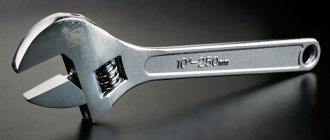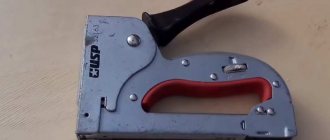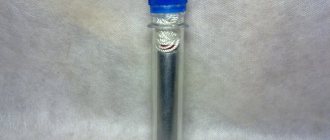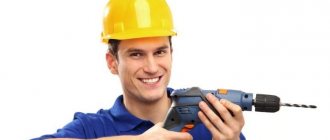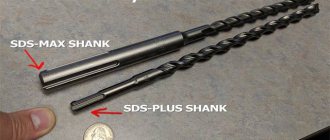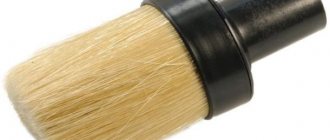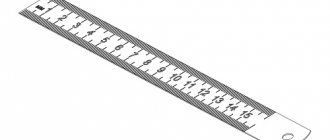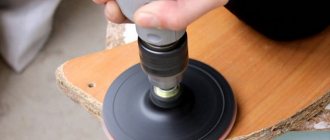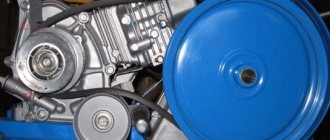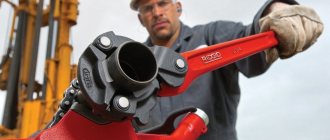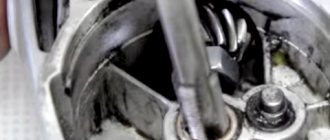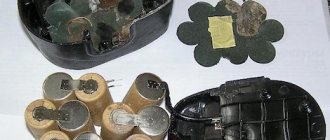general information
The principle of operation of the stapler mechanism is very simple: pressure is applied to the staple, it pierces the sheets and rests against the recesses of the bumper, after which its tips bend, fixing the clip on the surface of the paper. The differences between staples for office staplers lie in their types and sizes.
Staples made for mechanical desktop staplers and booklet staplers have almost the same parameters, however, the characteristics of consumables intended for electrical document staplers may differ slightly from them.
To understand what staples are needed for a stapler, you need to know how the documents being stapled will be used.
Stapling Types
Stationery staplers can be divided according to the method of fastening sheets. Among them, the most common option, which is often used by office workers, is closed-type stapler devices. During operation, this tool bends the edges of the staple inward. This method provides the most reliable connection of sheets. Therefore, it is not surprising that such staplers are the most popular.
There are also open type staplers. They differ from devices with a closed stitching method in that they bend the staples outward. They are indispensable when you need to temporarily stitch paper sheets. Subsequently, the fastened sheets can be easily separated, and no traces remain on them.
Some office workers sometimes purchase staplers with straight staples for work. It makes sense to use them when there is a need to fix sheets of paper on a special board with a soft surface. For example , it could be a base made of cork.
A little history
The first information about a device for stitching papers dates back to the eighteenth century, when it appeared in use in the office of the French king. On each of his paper clips there was a sign of belonging to the royal court. Ordinary people in those days knew nothing about the existence of staplers, and only those close to King Louis of France had information about them.
In 1879, George McGill received a patent for his invention of the "One-Stroke Staple Press", a design whose general principle is still used today. In 1895, the arrangement of brackets in a clip was invented, allowing them to be inserted into the device en masse, and not one at a time, as was done before. Probably at the same time, a receiving compartment appeared in the stapler, which made it possible to insert clips into it using clips.
Types of staplers
All office paper stapling devices are divided into:
- mechanical desktop devices;
- staplers-booklet makers;
- electric staplers.
Mechanical devices are designed to handle specific sizes of staples. Booklet makers and electric ones may provide the ability to adjust the feed mechanism to accommodate different staple sizes.
Staple shapes
All staples intended for stitching paper are U-shaped. Other types of paper clips are used in construction, furniture and other work. Consumables also differ in cross-sectional shape. Wire round brackets are the most common, but there are also large flat staples. For stapling documents and solving the problem of how to put staples on a stapler, the cross-sectional shape of the staples is not important.
Delivery
Free delivery of stationery within Krasnoyarsk within 2 working days for purchases over 2,500 rubles.
Free delivery throughout the Krasnoyarsk Territory when purchasing stationery worth more than 5,000 rubles. Delivery is carried out within a week, depending on the time of receipt of the application, direction and vehicle load.
Many people know what a stapler is. This useful accessory can be found on the desks of not only schoolchildren and students, but also office workers and entrepreneurs. It gained great popularity thanks to its simple device. With this tool you can, with a little effort, connect pieces of paper and cardboard using iron staples.
Dimensions
Typically, the size of staples for staplers is indicated by a fractional number, where the numerator is the series number, and the denominator is the length of the staple leg in millimeters. The series numbers go from larger to smaller sizes, so the staples for the stapler with size No. 10 are the smallest (back width 8.5 mm). The length of the staple leg affects the number of sheets to be stapled; the longer it is, the more sheets can be stapled:
- No. 10 – from 2 to 10 sheets;
- 24/6 – from 2 to 30 l.;
- 23/8 – up to 50 l.;
- 24/8 – up to 50 l.;
- 23/10 – up to 70 l.;
- 23/13 – up to 100 l.;
- 23/13 – up to 120 l.;
- 23/17 – up to 140 l.;
- 23/20 – up to 170 l.;
- 23/23 up to 200 l.
When choosing consumables, you need to take into account, for example, that a large paperclip can easily hold together 2-3 pieces of paper, but the document does not look very neat. Therefore, for a set of small quantities of papers, it is worth choosing a set of staples with size No. 10 for small staplers.
Some tips
Experienced users do not have problems installing brackets. For everyone else, there is a description in the instructions for the device, and a video on the Internet. In short, the process will look like this:
- Remove the spring pusher from the housing.
- Place the required number of paper clips into the holder with the tips facing down.
- Insert the clamp back.
- Close the lid.
For fruitful work, the amount of fasteners should be purchased with a reserve, so as not to go to the store for additional paper clips.
When purchasing a device for fastening with staples, the first thing you pay attention to is the quality of workmanship and the safety of working with it. It is better to pay attention to the products of well-known manufacturers who value their reputation. The basis of safety is the impossibility of spontaneous operation of the stapler. In branded instruments it is present in almost one hundred percent of products.
It's good to have a control window. Thanks to it, it is possible to control the presence of staples in the holder.
A comfortable, ergonomic handle has long become an integral part of a high-quality device.
Some manufacturers supply devices with adjustable impact force. This allows you to avoid damaging the surface during operation.
It is also important to remember the standard size of paper clips suitable for this model.
Aluminum clips are best suited for fastening vapor barriers. For lining - made of stainless steel.
The question often arises as to why a furniture stapler bends staples. It is likely that they were of poor quality. Or the furniture covering does not penetrate due to a malfunction of the stapler or hard covering.
With a reliable and high-quality tool, every operation will be performed quickly and comfortably. Therefore, you should not save on purchasing such a device, so as not to waste effort and money working with second-rate devices.
The correct choice of staples for a stapler is important, because the quality of the stapler itself directly depends on the quality of the staples.
Usually, it is written on the stapler or on the packaging which staple number is suitable for it. Staple packaging is usually represented by cardboard boxes containing 1000 staples. Standard KW-trio brackets have the following numbers: No. 10, 24/6, 23/8, 24/8, 23/10, 23/13, 23/15, 23/17, 23/20, 23/23.
In staples produced under a fraction (for example, 23/6), the value in the numerator (23) determines the number of staples per inch, and the denominator (6) determines the height of the staple leg in mm. The lower the number of staples per inch, the thicker the wire from which the staple is made. This indicator is also important because in staplers designed to use 24/6 staples, you should not use 23/6 staples, despite the fact that it seems that the difference between 23 and 24 staples is not so significant .
The output hole of the stapler head in any stapler is strictly calibrated for a specific staple size, and if a staple other than the recommended one is used, then it is possible that the specified hole will break (if thicker staples are used), or two staples will slip through and get stuck at the same time ( if thinner than recommended staples are used). When determining which staple to choose for fastening a particular brochure, it is necessary to use the height of the staple leg; it should be 2.5-3 mm greater than the thickness of the brochure. Moreover, when measuring the thickness of the brochure, you must first press it down slightly.
Read also: Checking battery capacity with a multimeter
A high-quality staple is made from uncut (equal in diameter on any segment) wire: in this case, all staples will be equally even.
An important indicator of the staple is also the sharpness of the edges - the ease of operation of the stapler depends on this. Staples should have pointed ends that allow easy piercing of the papers being stapled. The legs can be sharpened on the outside or inside.
Another important indicator is the strength of the bracket. A normal staple should punch through a set number of sheets of paper.
KW-trio staples satisfy all of the above indicators and are always distinguished by consistent quality at a fairly affordable price.
We also strongly recommend that you always use staples and staplers from the same manufacturer. KW-trio staples will provide you with excellent fastening results and durable operation of the stapler.
The first known stapler (that was the name of the grandfather of the stapler) was handmade. Which is not surprising. It was made in the 18th century in France. At the court of the then ruler King Louis XV (Beloved - however, this is not relevant). Each staple of this stapler bore the insignia of the royal court of Louis XV.
The first known stapler (that was the name of the grandfather of the stapler) was handmade. Which is not surprising. It was made in the 18th century in France. At the court of the then ruler King Louis XV (Beloved - however, this is not relevant). Each staple of this stapler bore the insignia of the royal court of Louis XV.
Photo 1. The first patented stapler.
Before the stapler was invented, sheets of paper were held together with a string pulled through a hole and sealed with sealing wax or sealing wax. This method has survived to this day, except that wax and sealing wax have been replaced by a seal imprint on a piece of sheet.
In the second half of the 19th century, the first patent was issued to George McGill for a device for fastening sheets of brass. Soon he patented another similar invention, intended for fastening paper sheets under the name “McGill Single Stroke Staple Press”. Originally, only one staple could be inserted into this device. This was the father of our stapler.
Photo 2. George McGill was the first to receive a patent for a stapler.
It’s hard to imagine an employee’s workplace without a stapler, just like any office. And despite the fact that the electronic document management system is increasingly increasing in many areas, the stapler is still a popular product and will remain for a long time. Well, staples are not an integral part of the stapler.
The staples are numbered as follows: 10, 24/6, 23/8, 24/8, 23/10, 23/13, 23/15, 23/17, 23/20, 23/23
Photo 3. The choice of staples depends on the model of the stapler used and the number of sheets being stapled.
The number of staples determines how many sheets can be fastened with it.
Bracket number
Number of sheets
Staple leg height
Table 1. Correspondence of the staple number to the thickness of the sheets being punched.
Paper clips are made of metal and can be coated: galvanized, nickel-plated or non-ferrous.
In humid conditions, galvanized staples do not corrode (do not rust) and do not leave dirty marks on documents.
Supplied mainly in cardboard packs, 1000 pcs.
The staples may or may not be sharpened. Sharpened staples are produced by manufacturers in the middle and high price categories. Sharpened staples allow you to stitch stacks of sheets with significantly less effort compared to unsharpened staples.
Colored staples allow them to be used as a kind of “secret alarm”. For example, some contracts, sealed, say. Green staples must go through the signing process at an accelerated speed. Some clients take advantage of this.
Photo 4. Colored staples are a way to discreetly sort your documents.
Steel products
To decide how to choose metal staples for staplers, there are several important factors to remember. Stainless steel clips have the best strength, and they are also resistant to rust, but this is the most expensive material. It is best used when stapling documents for long-term storage, a large number of sheets intended for frequent viewing, and important documentation.
Galvanized steel clips have a lower cost. They are also quite durable and can be used for stapling documents with a long shelf life. To understand which staples are best for a stapler, you must take into account the quality of the material used to make the staples.
To fasten everyday documents, you can use steel and painted staples.
Rules for safe use of the tool
You can do many things with a construction stapler, but each has its own specifics.
For each specific job, you need to choose a tool that can make the task easier. The instrument should look decent and not ring in your hands. It is advisable that all its parts are made of metal - you can read this on the packaging before purchasing. For a metal stapler, staples with a length of 4 to 14 mm are used. The cost of a quality instrument is high, but it’s not worth paying twice. A cheap model breaks down quickly, which can happen for several reasons:
- the internal mechanism wears out in it;
- springs break;
- a low-quality model can hit 2-3 fasteners at once.
- it will be light in weight, and driving the staple into dense material will not always be possible with one hand.
When working with a construction stapler, it is imperative to follow safety regulations. The main requirements boil down to the following points.
- When replacing staples, you need to block the tool with a fuse from sudden, unexpected activation.
- It is prohibited to point the tool at your hand or other part of your own body, as well as at other people or animals.
- When transporting or storing the stapler, it is necessary to secure its handle with a safety lock.
- Only a person in a normal psychological state (not under the influence of alcohol, psychotropic substances or drugs) is allowed to work with a staple gun.
- The workplace should be well lit and kept clean.
- It is necessary to constantly use personal protective equipment such as glasses so that nothing accidentally flies into the eye. To prevent the bracket from flying off when fired, you need to monitor the presence of metal inclusions on the working surface, bypassing or removing them in a timely manner.
- If the fastener gets stuck, it must be carefully removed.
- When working with small workpieces, they must be held motionless using a vice or clamps; it is prohibited to hold them with your hands.
- Your body position should always be stable and as comfortable as possible, and your shoes should have non-slip soles.
Instructions for safe work with electric and pneumatic staplers contain additional points:
- corded power tools must not be used inside hazardous areas;
- Only switched off equipment is allowed to be connected to the outlet;
- the power cord with plug and the body of the model being used must be intact;
- It is prohibited to use an electric staple gun in the rain or indoors with high levels of humidity;
- unauthorized persons must be kept at a distance of more than 2 m;
- the pneumatic tool used, the high-pressure hose attached to it, as well as other parts of the system must be free of mechanical damage;
- During work, it is necessary to ensure that the power cord is located behind the tool so that it does not interfere.
There is nothing complicated when using mechanical, pneumatic, or electric types of construction staplers. It is only necessary to use suitable fasteners (specified in the operating instructions) for the job, and before doing so, adjust the impact mechanism for the specific material. At the same time, constant adherence to safety precautions will prevent injury. Attention and accuracy are one of the main guarantees of high-quality performance of any work.
Popular consumables for stitchers
The most popular bracket sizes are the first three items from the list above. Staples No. 10 (the smallest) are used when attaching documents from several sheets: applications with attachments, checks, invoices, etc. 24/6 and 23/8 are used to staple a package of documents.
Based on the material of manufacture, galvanized steel and painted steel clips are most often chosen. The way staples are made affects demand. Brackets with pointed ends sell better.
How to insert staples into a stationery stapler
A person who is far from clerical work may not know this. When installing staples into a stapler, you need to remember one thing - to prevent the staples from falling apart, at the factory they are assembled into blocks and glued together, so to thread them into the stapler, you need to:
- open the covers of the stapler receiving device;
- move the pressure spring;
- install the unit in the receiving compartment located under the lid (this is where to insert the staples into the stapler);
- release the spring;
- close the stapler cover until it clicks.
To check how you managed to insert paper clips into a stationery stapler, you just need to fasten a couple of sheets of paper. If the staples are wrinkled, you can adjust their location inside the receiving compartment and move/release the pressure spring several times.
- < Back
- Forward >
Additional options
When buying a stationery stapler, few people might think that it can be further improved. However, this is not the case , and this is confirmed by new models that manufacturers regularly release in order to improve their ease of use.
- If you want to get one of these models at your disposal, we recommend that when choosing a stapler, make sure that there is a plastic footrest or rubberized inserts at the bottom of the body. They will help protect the table surface from scratches and other mechanical damage.
- Some models can be additionally equipped with such a useful device as a destapler. Its main purpose is to straighten staples. It may be required if you decide to separate sheets of paper that were once fastened together. Of course, you can use scissors or nails for this, but this is not very convenient, and after such a “barbaric” method, the sheets will no longer look as aesthetically pleasing as before.
